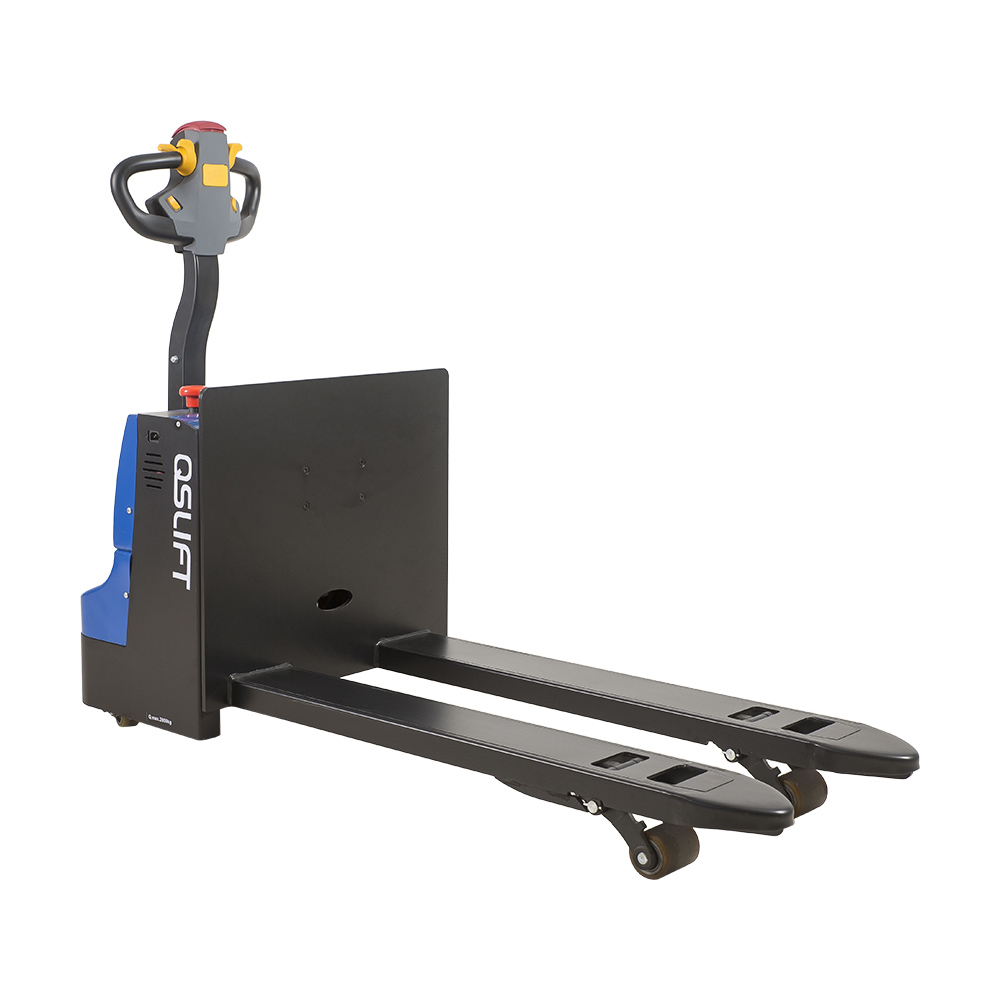Preventing a potentially catastrophic failure of a
power pallet truck is crucial for the safety of operators and those working in the vicinity. Catastrophic failures can lead to accidents, injuries, and damage to goods and equipment. Here are some steps to help prevent such failures:
Regular Maintenance:
Follow a comprehensive maintenance schedule as recommended by the manufacturer. This includes inspections, servicing, and replacement of worn or damaged components.
Operator Training:
Ensure that operators are properly trained to operate the power pallet truck safely and efficiently. They should be aware of the truck's limitations and safety protocols.
Load Capacity Awareness:
Train operators to accurately estimate load weights and to avoid overloading the truck. Overloading can strain the truck's components and increase the risk of failure.
Proper Use:
Emphasize safe and proper use of the power pallet truck. This includes using the equipment within its specified load capacity, avoiding sudden jerky movements, and following recommended operating procedures.

Inspect and Maintain Hydraulic System:
Regularly inspect the hydraulic system for leaks, damage, or other issues. Maintain the hydraulic system as needed to prevent pressure-related failures.
Battery Maintenance (if applicable):
If the power pallet truck is battery-powered, follow proper battery maintenance procedures to ensure consistent power delivery and prevent unexpected shutdowns.
Tire and Fork Inspection:
Inspect the tires and forks for wear and damage. Damaged or worn tires and forks can affect stability and lead to failures.
Emergency Stop Devices:
Ensure that the power pallet truck is equipped with functional emergency stop devices and train operators on their proper use in case of emergencies.
Avoid Overloading Ramps and Obstacles:
When driving on ramps or over obstacles, avoid overloading the truck. Use the truck's features as intended and maintain proper load distribution.
Environmental Conditions:
Operate the truck in appropriate environmental conditions. Ensure that the working area is well-lit, clean, and free from hazards that could lead to sudden failures.
Tire and Wheel Maintenance:
Keep the wheels, tires, and load rollers in good condition. Maintain and replace these components as needed to ensure proper traction and stability.
Safety Inspections:
Conduct regular safety inspections, including checks for loose or missing bolts, nuts, and fasteners, to identify potential issues before they become catastrophic.
Calibration and Testing:
If the power pallet truck is equipped with load weight indicators or scales, ensure that these systems are regularly calibrated and tested to provide accurate load weight information.
Emergency Response Plan:
Develop and communicate an emergency response plan that includes procedures for handling potential catastrophic failures, evacuations, and first aid.
Operator Feedback:
Encourage operators to report any issues or concerns they encounter during their shifts. This feedback can help identify potential problems before they escalate.
Documented Inspections:
Maintain detailed records of all maintenance and safety inspections, including the date, findings, and any corrective actions taken.
By diligently following these preventive measures and prioritizing safety, you can reduce the risk of a potentially catastrophic failure of your power pallet truck, ensuring the safety of your workers and the integrity of your material handling operations.









